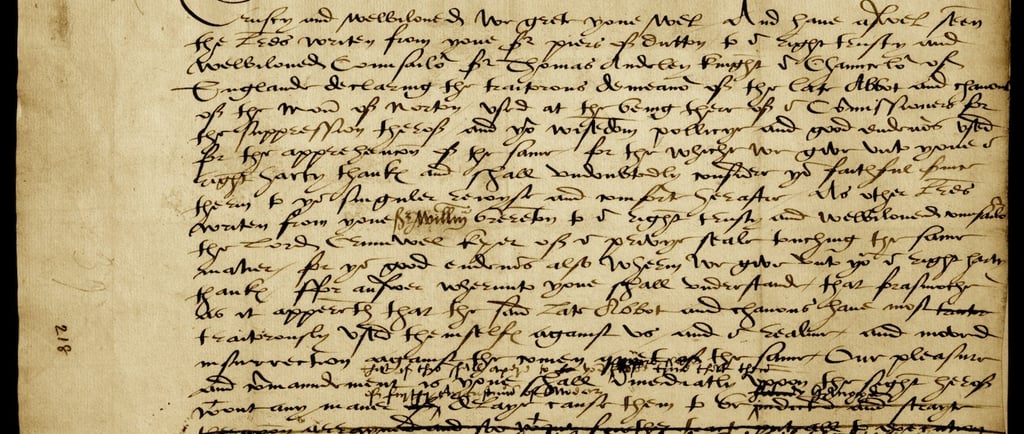The History of Letter Writing: From Quills to Ballpoint Pens
1/18/20253 min read


As someone who’s always been fascinated by history, it feels only fitting to write about something that’s both deeply personal and undeniably historical: the art of letter writing. There’s something magical about the way letters have bridged distances, connected hearts, and recorded moments in time. They’ve been written with everything from quills to ballpoint pens, yet their purpose remains the same—to communicate, to share, and to leave a trace of ourselves behind.
(Disclaimer: The dates provided in this timeline are approximate and meant to give a general idea of how letter writing progressed through time.)
Early Days of Letter Writing: Chisels, Papyrus, and Parchment
Long before pens became a thing, humans were already writing to each other. The earliest forms of written communication, around 3000 BCE, were inscribed on clay tablets using chisels. Picture an ancient Babylonian taking the time to carve out a message—talk about dedication!
Fast forward to circa 2000 BCE, and we get to the Egyptians, who wrote on papyrus scrolls. These were lighter, portable, and more practical for correspondence. By circa 500 BCE, the Greeks and Romans were using parchment made from animal skins. Letters weren’t just practical; they were also symbols of status and power. If you got a letter sealed with wax and marked with a royal crest, you knew it was serious business.
The Age of the Quill: A Feather in the Cap of Communication
The Middle Ages (circa 500-1500 CE) saw the rise of the quill pen, which, let’s face it, is the most romanticized writing tool of all time. Made from bird feathers, quills were dipped in ink and used to craft everything from love letters to royal decrees.
Monks in medieval Europe became master letter writers, creating illuminated manuscripts that were as much art as they were communication. Letters during this time often bore elaborate seals and were hand-delivered—a process that could take weeks or even months, depending on the distance.
Renaissance and Enlightenment: When Letters Became High Art
By the Renaissance (circa 1300-1600 CE), letters had evolved from purely functional to highly personal. Paper became more widely available, and ink recipes improved. This period gave us some of the most iconic letter writers in history, like Voltaire and Benjamin Franklin. Letters were used to exchange ideas, spark debates, and even share gossip (yes, gossip has a long history too!).
During the Enlightenment (circa 1700-1800 CE), the letter-writing game leveled up. People wrote to express their feelings, document their travels, and discuss philosophy. Letters were no longer just about getting information across; they became a way to share pieces of one’s soul.
The Industrial Revolution: Writing for the Masses
The Industrial Revolution (circa 1760-1840 CE) changed everything, including how we wrote letters. With the mass production of paper and pens, writing tools became affordable and accessible to ordinary people. Add the invention of the Penny Post system in 1840, and suddenly, sending letters was cheaper and faster than ever before.
This era saw an explosion of personal correspondence. Love letters, family updates, and business dealings were all conducted through the mail. Writing became an essential part of everyday life, not just for the elite but for everyone.
The Ballpoint Revolution: Writing Made Easy
Then came the 20th century and, with it, the invention of the ballpoint pen (circa 1930s). These pens were game-changers. No more messy ink bottles or constant dipping—just smooth, efficient writing at the flick of a wrist. The ballpoint pen made letter writing even more accessible and convenient, cementing its place as a staple in modern communication.
Letters took on new significance during the World Wars (1914-1945). Soldiers wrote home to their families, and those letters became lifelines, carrying love and reassurance across oceans and battlefields. Even as technology advanced, the act of sitting down to write a letter remained deeply meaningful.
Today: A Nostalgic Revival
In today’s digital age, it’s easy to think letter writing has become obsolete. Emails and instant messages are faster, after all. But there’s a growing movement to bring it back. People are rediscovering the joy of putting pen to paper, of crafting something tangible and personal. Specialty stationery and fountain pens are making a comeback, and letter-writing clubs are popping up around the world.
There’s something uniquely human about writing a letter. It forces you to slow down, to think about your words, and to create something that can be held, saved, and cherished.
Final Thoughts
The tools have changed, but the heart of letter writing remains the same: connection. From quills to ballpoint pens, the act of writing letters has always been about more than just the words on the page. It’s about the thought, the effort, and the human need to reach out and share a piece of ourselves. So, if you’ve been thinking about writing someone a letter, this is your sign. Grab a pen, any pen, and get started. Who knows? Your letter might just make history.